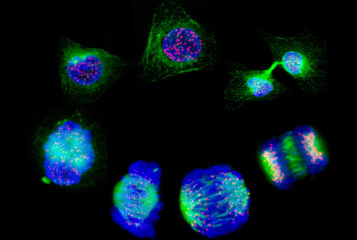Cell atlas of the human ovary published
Researchers have developed the first-ever spatial map of all the different cell types that make up the human ovary...

Researchers have developed the first-ever spatial map of all the different cell types that make up the human ovary...

by Yan Lau
Changing the expression of a specific protein can significantly improve the performance of immune-cell-based cancer therapies, according to two separate studies published in Nature...

A novel genetic variant reduces the risk of Alzheimer's disease by up to 70 percent in people who are predisposed...

Inactivating a gene that codes for a protein involved in early mouse development results in the formation of two extra hindlimbs in the place of external genitalia...

The world's largest catalogue of human breast cells has revealed early cell changes in carriers of BRCA gene mutations, offering a potential target for breast cancer prevention...

A simple blood DNA test could help doctors identify the best treatment options faster in patients with lung cancer...

A clinical trial for a CRISPR-based therapy for high-cholesterol has been suspended after a participant developed unforeseen side effects...

As stem-cell-based embryo models (SCBEMs) become increasingly complex, they also raise big questions – how do we define a human embryo, and what limits should be placed on SCBEM research?...

A genetically engineered pig kidney has been successfully transplanted into a human recipient for the first time...

Structural changes in a specific protein triggers egg coat hardening after fertilisation, research shows...
BioNews, published by the Progress Educational Trust (PET), provides news and comment on genetics, assisted conception, embryo/stem cell research and related areas.

